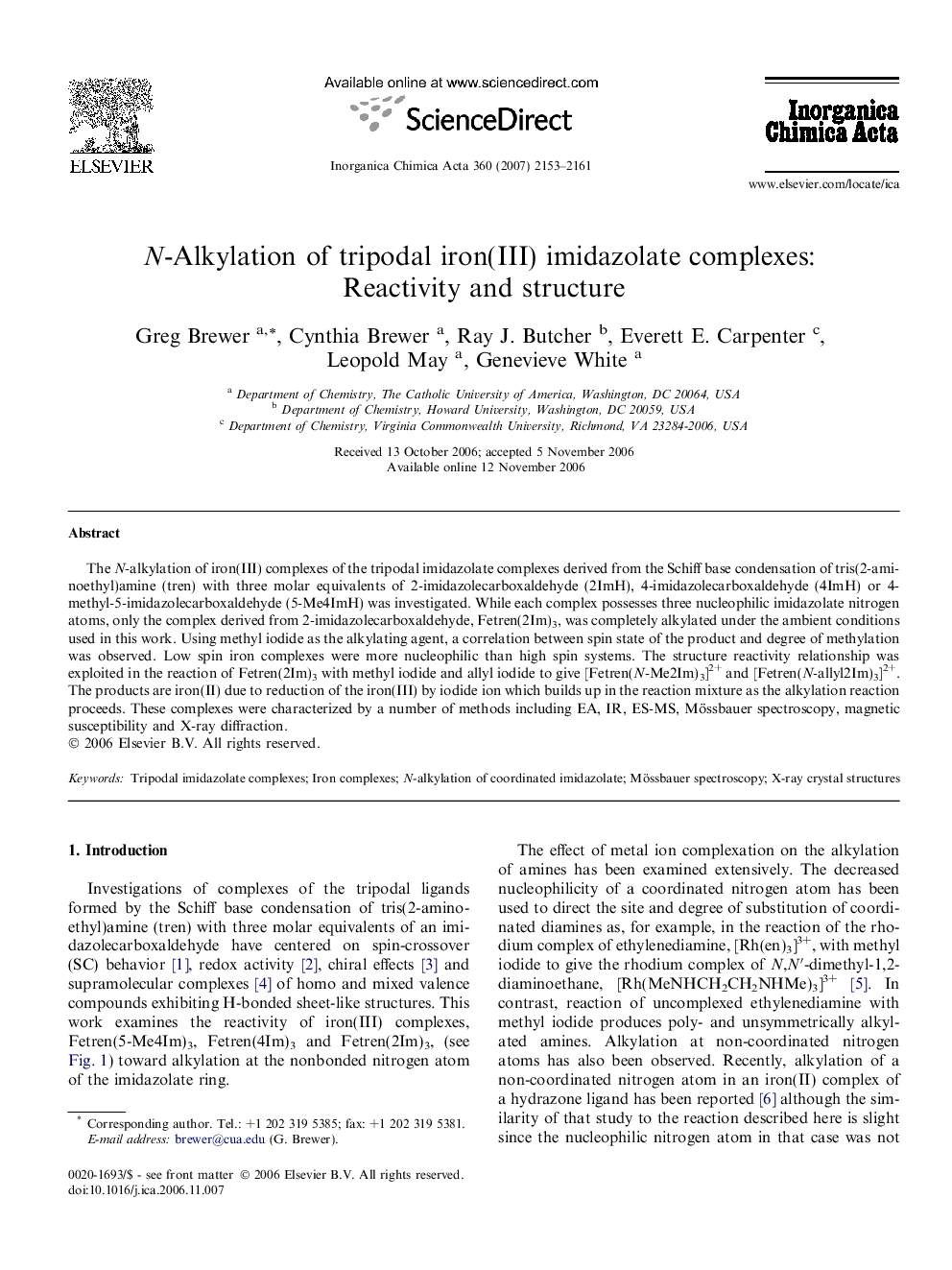| Article ID | Journal | Published Year | Pages | File Type |
|---|---|---|---|---|
| 1310479 | Inorganica Chimica Acta | 2007 | 9 Pages |
The N-alkylation of iron(III) complexes of the tripodal imidazolate complexes derived from the Schiff base condensation of tris(2-aminoethyl)amine (tren) with three molar equivalents of 2-imidazolecarboxaldehyde (2ImH), 4-imidazolecarboxaldehyde (4ImH) or 4-methyl-5-imidazolecarboxaldehyde (5-Me4ImH) was investigated. While each complex possesses three nucleophilic imidazolate nitrogen atoms, only the complex derived from 2-imidazolecarboxaldehyde, Fetren(2Im)3, was completely alkylated under the ambient conditions used in this work. Using methyl iodide as the alkylating agent, a correlation between spin state of the product and degree of methylation was observed. Low spin iron complexes were more nucleophilic than high spin systems. The structure reactivity relationship was exploited in the reaction of Fetren(2Im)3 with methyl iodide and allyl iodide to give [Fetren(N-Me2Im)3]2+ and [Fetren(N-allyl2Im)3]2+. The products are iron(II) due to reduction of the iron(III) by iodide ion which builds up in the reaction mixture as the alkylation reaction proceeds. These complexes were characterized by a number of methods including EA, IR, ES-MS, Mössbauer spectroscopy, magnetic susceptibility and X-ray diffraction.
Graphical abstractThe alkylation of tripodal iron(III) imidazolate complexes derived from 2-imidazolecarboxaldehyde with methyl or allyl iodide gives iron(II) complexes in which all three non-bound imidazole nitrogen atoms are alkylated. The low spin iron complexes are more nucleophilic than their high spin analogues.Figure optionsDownload full-size imageDownload as PowerPoint slide
